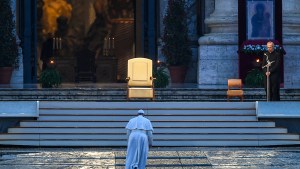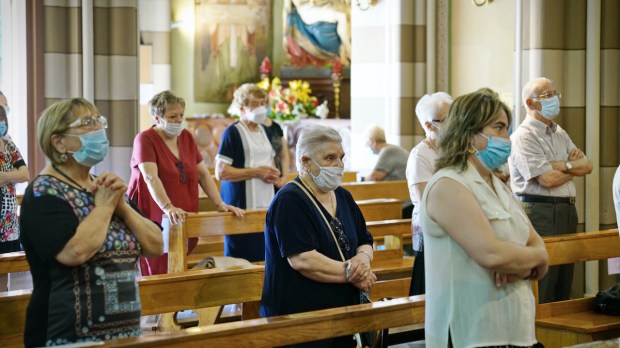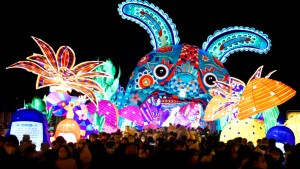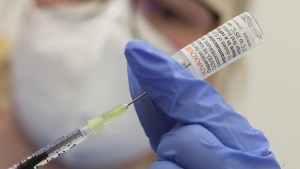Four years ago this Thursday, January 11, health authorities in the central Chinese city of Wuhan announced the first death of a person with COVID-19. The virus had first been discovered there the previous month.
The following weeks would see the virus show up in other major cities around the world, with growing restrictions on populations to slow or stop the spread of the virus. The “novel coronavirus,” as it was first called, would soon take a significant toll on lives and health, upending everyday routines, battering national economies, and interfering with international trade and supply chains.
To date, COVID-19 and its variants have claimed an estimated 3.4 million lives worldwide, according to the World Health Organization. The Centers for Disease Control and Prevention puts the death toll in the US at almost 1.17 million.
As the infection often led to severe difficulty in breathing, many victims were rushed to hospitals. Healthcare facilities soon found that they were overwhelmed and needed to divert space, personnel, and resources to the new health emergency. Loved ones were restricted from visiting COVID victims, many of whom ended up dying alone.
Death toll
Sadly, many patients died without a priest or other religious minister being able to administer sacraments or pray with the dying.
Nevertheless, hundreds of priests and religious contracted COVID, and many died from the virus, particularly priests in northern Italy, which experienced a severe outbreak early on. More than 20 cardinals had at least one bout of COVID, and the sickest among them may well have been US Cardinal Raymond Burke, who was in hospital on a respirator for some time. The Vatican’s Secretary of State, Cardinal Pietro Parolin, had a mild case. The apostolic nuncio to the European Union, Archbishop Aldo Giordano, succumbed to the virus. So did Pope Francis’ personal physician.
A growing fear that anyone could become a victim or at least a carrier of the virus led to restrictions of movement. Just as more and more employees began working from home and students took lessons online, the practice of religion also shifted from church buildings to the “domestic church.” Houses of worship at first imposed rules that had been used in prior epidemics. For Catholics, that often meant no holy water in the fonts, no shaking hands during the Sign of Peace, and no receiving the Precious Blood from a common chalice.
In time, those restrictions were seen as insufficient. Even “social distancing” was not enough, and by March of 2024, bishops were granting dispensations for Sunday Mass attendance, and then closing churches and encouraging parishioners to watch the liturgy “online.” For much of 2020 and into 2021, many Catholics would see a priest alone at the altar in an empty church being beamed across the internet.
Initially, when such restrictions were lifted, Catholics did not instantly fill the pews again. It took some time for people to return to the regular practice of attending Sunday Mass. Still, a June 2023 survey conducted by the Center for Applied Research in the Apostolate (CARA) found that 24% of adult Catholics in the US attend Mass at least once a week – similar to the share attending prior to the COVID-19 pandemic in early 2020.
The ethics of vaccine use
While people got used to washing hands and wearing masks, travelers were subject to mandatory multi-day quarantine upon returning from a country where COVID was spreading. Pharmaceutical firms rushed to develop vaccines against the virus, and the US Food and Drug Administration prioritized testing of vaccines. But some people had moral qualms with some of the vaccines that were being produced. Some of the vaccine development and testing used HEK293 cell lines that are descended from two abortions that took place in the 1970s. Some ethicists argued that since the connection of these cell lines with an abortion is remote, and the intention of the person receiving the vaccine is to protect life, it is morally permissible to receive the vaccines.
Pope Francis not only echoed ethicists who said it was morally admissible to receive a vaccine, but urged Catholics to do so. He himself received the vaccine and suggested to Catholics that getting it was an “act of love,” as it helped protect the vulnerable against the virus. On another occasion, he suggested it was a moral obligation to get the jab.
Perhaps the most poignant moment of the whole pandemic came on March 27, 2020, when Francis held a prayer vigil at St. Peter’s Basilica and offered a hurting world a special urbi et orbi blessing. As a steady drizzle fell over an empty St. Peter’s Square, the Pope reflected on the Gospel story of Jesus calming the storm on the Sea of Galilee while he rode in the Apostles’ fishing boat.
“Let us invite Jesus into the boats of our lives,” he said. “Let us hand over our fears to him so that he can conquer them.”




